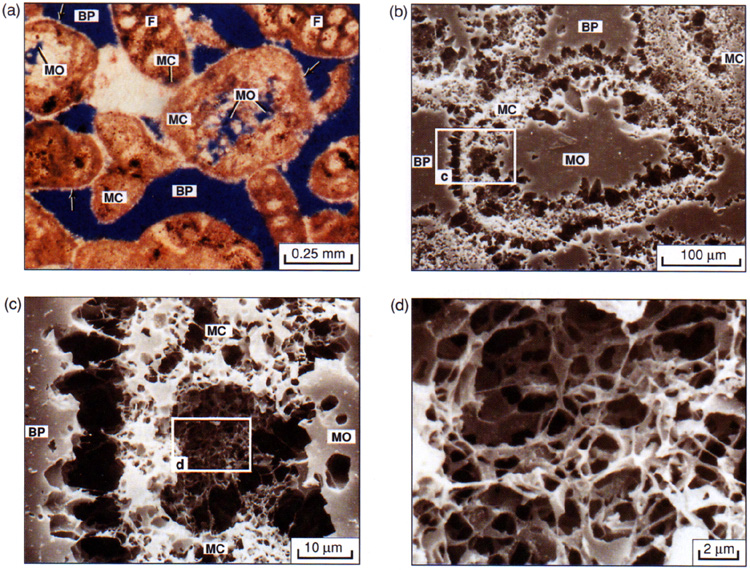
Figure 3 a,b,c.d. Microporosity in Arab Formation carbonates. In thin section, porosity is filled by blue-dyed epoxy, calcite is stained pink to red, other minerals are unstained.
(a) Thin section photomicrograph of skeletal-oolitic grainstone. Interparticle (BP) and moldic (MO) macropores are abundant. Microporosity (MC) occurs within micritized grains and foraminifera (F). Isopachous fringing calcite cement (arrows) coats most grains in this sample (plane-polarized light, Saudi Arabia, Abqaiq field, Arab-D). (b) SEM photograph of epoxy pore cast of sample shown above. Carbonate has been etched away by dilute hydrochloric acid, leaving epoxy replica of pore space. Interparticle (BP) and moldic (MO) macropores are present as solid epoxy, while microporous grains (MC) display fine network of hair-like micropores. (c) Detail of area outlined in sample shown in (b). Microporosity (MC) occurs as tortuously interconnected fine pores, while large moldic (MO) and interparticle (BP) pores are completely filled by epoxy. Note the thin, straight micropores between cement crystals that surrounded the grain before being etched away during sample preparation. (d) Higher magnification view of area outlined in previous example. Prior to leaching, this micritized grain consisted of well-sorted calcite crystals 1 to 4 microns in size; microporosity occurs as highly interconnected pores generally 1 micron or less in diameter.
